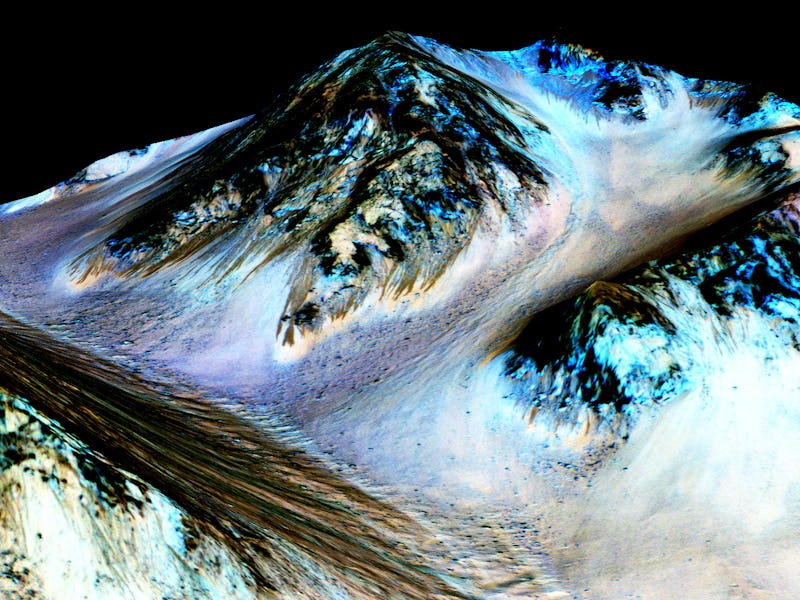Remember when NASA told us there’s liquid water on the surface of Mars? Well, that little factoid might be murkier than we thought. Turns out, a set of new lab experiments seeking to recreate the supporting evidence ended up with an unexpected outcome.
Here’s the deal: the original data that suggested there was water on Mars was based off something called recurring slope lineae — dark streaks that appear and vanish seasonally on the walls of various coasters and canyons on the surface of the planet. Follow-up data collected by the Mars Reconnaissance Orbiter indicated that the RSL sites possessed hydrated salts, which could essentially be explained only by some sort of liquid flow of water originating from some place.
And of course, the presence of water on another planet is phenomenal because it suggests another world might be capable of supporting life, and that future astronauts may be able to use that water as a resource for a extraterrestrial colony.
Now, the origin of that liquid water was unknown — and it’s still unknown today. Why are scientists so sure the source has to be ground based? Michael Meyer, the lead scientist for NASA’s Mars Exploration Program, explained to Inverse during an interview for a previous story this year that the atmosphere of Mars is extremely dry. “If you completely froze out the atmosphere of mars, you would have a 10 micron layer of ice around the planet,” he explains. “That’s less than the width of a sheet of paper! The likelihood these RSL sites were getting their thirst quenched by atmospheric water was low.
But a team of researchers decided to verify whether the salts in the RSL sites really had to be hydrated through surface flow, or whether atmospheric water could have been enough. A pair of University of Colorado, Boulder scientists exposed salts to atmospheric conditions similar to Mars, and found that some of them actually became hydrated solely through atmospheric means.
Those results, presented last week at the American Geophysical Unions annual fall meeting in San Francisco, don’t outright nix the idea that there’s a source of liquid water somewhere on Mars. But they do raise some concerns that will need to be addressed and explored through future experiments.
What would help the most, actually, is to acquire an actual sample of the hydrated salts on Mars and analyze them directly. The problem is that the RSL sites are located in pretty harsh terrain — sending humans in would be a dangerous endeavor, and we don’t yet have the kind of robotic technology that could feasibly go in on its own.
Regardless, the results underscore the fact that while water on Mars is an exciting prospect, we should not get carried away until we have tangible proof of what we’re seeing.
